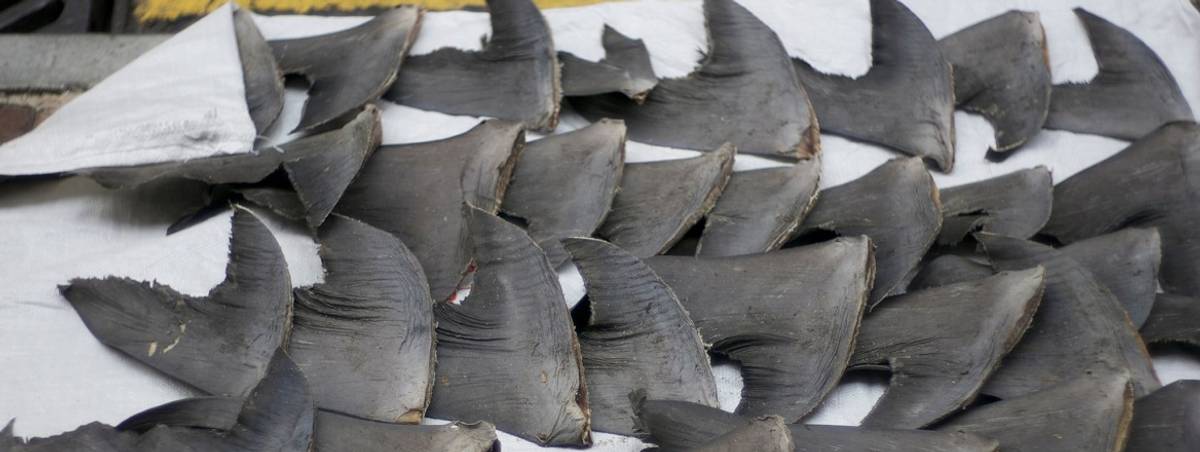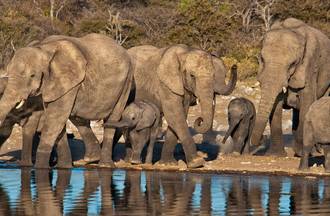Combatting International and Trans-border Wildlife Trafficking in Peru and Ecuador
Strengthening enforcement capacities and improving synergies to combat international and trans-border wildlife trafficking in and between Peru and Ecuador.
Ours was the first in-depth research project investigating trafficking of protected wildlife through legal supply chains in South America. Undertaken in partnership with the Wildlife Conservation Society (WCS), the project focused on understanding the role of corruption, criminal networks and deficient regulatory frameworks in encouraging wildlife crimes in Peru and Ecuador. The study paid particular attention to the illegal shark trade in and from Ecuador, as well as the vast irregularities in the regional animal breeding business in Peru.
The primary focus of the study was to provide targeted recommendations to local governments and generate new intelligence on illicit financial flows; both aimed to improve our understanding of the huge impact of wildlife crime on regional ecosystems.
Project team
Aims and objectives
The project aimed to support local authorities in eradicating illegal wildlife trafficking (IWT) through legal supply chains by:
Creation and Analysis of Wildlife Crime Case Databases
The project aimed to compile a database of cases where trade in protected wildlife has been laundered through legally registered operations and facilities across South America, with a specific focus on Peru and Ecuador. Based on the data collected, RUSI developed a set of hypotheses for how protected wildlife enters and is hidden through legal supply chains.
The analysis considered multiple, pre-identified protected species as well as drivers, networks and enabling factors. This led to the identification of other crimes associated with this sort of activity (including fraud, money laundering, document forgery and corruption), and to the development of hypotheses on how these criminal activities interact. This information was used to test the effectiveness of existing legislation in combatting this challenge.
Development of Classifications and Recommendations
The project team used the data gathered during the compilation and analysis of the wildlife crime database to inform the development of a set of typologies of how protected wildlife enters legal supply chains.
These typologies informed the development of targeted technical and policy recommendations for how Peru and Ecuador might combat the problem.
Funding
Wildlife Conservation Society
This project is funded by the Wildlife Conservation Society (WCS)
Project outputs
The project produced:
- A confidential 10,000-word report that a) provided a regional overview of wildlife trafficking in South America, with a focus on Peru and Ecuador; b) described how protected wildlife has been laundered through the legal supply chain across South America, with a specific focus on Peru and Ecuador; c) listed the crimes associated with this laundering; d) identified the gaps in the response to the problem and provided an understanding of why they exist; and e) made recommendations to improve the response.
- Two Briefing Papers on the research findings to authorities in Peru and Ecuador. The Briefing Papers were presented to local authorities remotely in January 2022.
- One Briefing Paper on the findings to the Bureau of Oceans and International Environmental and Scientific Affairs (OES).
Project impact
The project helped increase regional awareness about the ways in which protected wildlife has been laundered through legal supply chains across South America in several ways. Through the production of the confidential 10,000 word report, the project used empirical CITES (Convention on International Trade in Endangered Species of Wild Fauna and Flora) data to identify and define clear typologies of wildlife laundering in the region.
The project also helped grow the knowledge base around wildlife laundering in two significant regional hotspots: Peru and Ecuador. In doing so, it helped identify institutional and policy weaknesses that enable wildlife laundering in the region.
Key findings were presented to local authorities and policymakers in January 2022.








